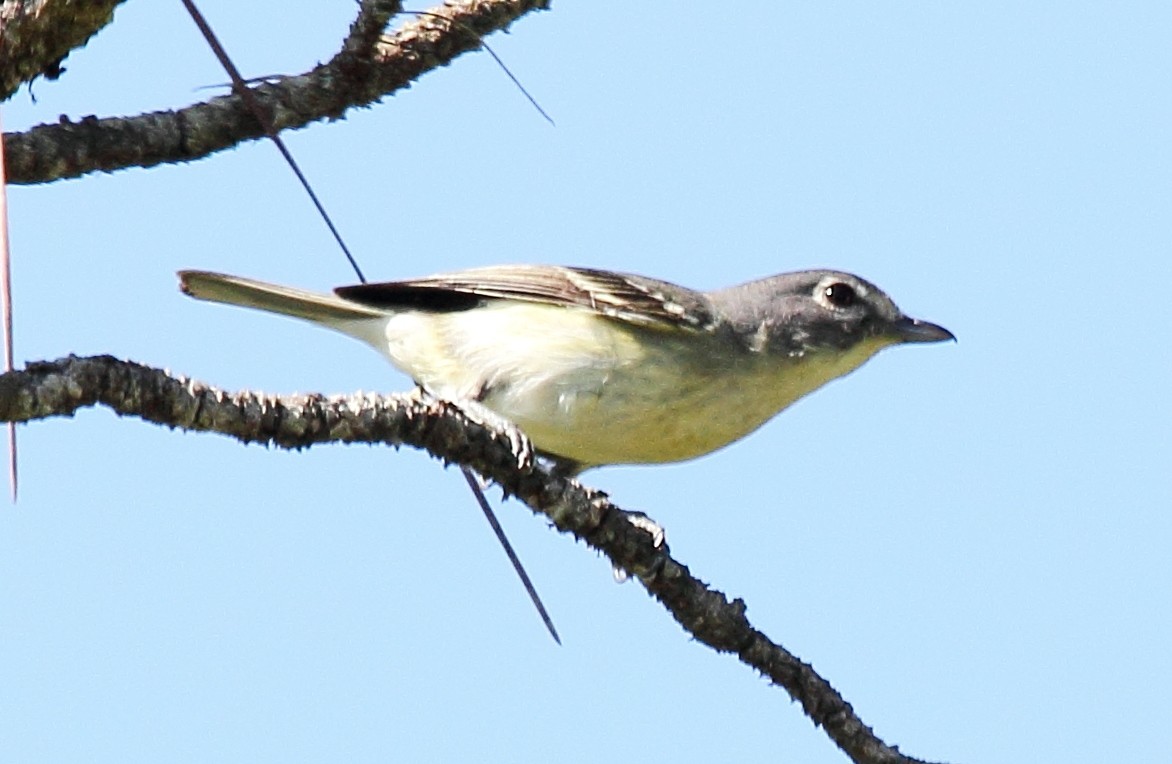Plumbeous Vireo
A species of Vireos, Also known as Plumbeous Solitary Vireo, Notable Vireo Scientific name : Vireo plumbeus Genus : Vireos
Plumbeous Vireo, A species of Vireos
Also known as:
Plumbeous Solitary Vireo, Notable Vireo
Botanical name: Vireo plumbeus
Genus: Vireos
Content
Description General Info
 Photo By Dominic Sherony , used under CC-BY-SA-2.0 /Cropped and compressed from original
Photo By Dominic Sherony , used under CC-BY-SA-2.0 /Cropped and compressed from original Description
The plumbeous vireo (Vireo plumbeus) is a small North American songbird, ranging from far southeastern Montana and western South Dakota south to the Pacific coast of Mexico, including the extreme southern regions of Baja California Sur. It is migratory, moving to the southern part of its range in winter, and its habitat generally encompasses open pine forests. The plumbeous vireo is 4.75 inches (12 cm) in length, with a gray head, back, and flanks, and whitish underparts. It has a solid white eye ring and white wing bars. The song, given persistently, consists of short, rough whistled phrases of several notes, spaced about 2 seconds apart. The phrases often alternate ending on a high note and a low note, giving an impression of question and answer. The plumbeous vireo builds a cup nest out of bark strips and down in the fork of a twig. It lays 3 to 5 white eggs with some brown spots. This species was formerly considered to belong to the same species as Cassin's vireo and blue-headed vireo. At that time, this complex of species was referred to as the "solitary vireo". 
Size
13-15 cm (5-6 in)
Life Expectancy
7 years
Nest Placement
Tree
Clutch Size
3 - 5 eggs
Feeding Habits
Plumbeous Vireo mainly consumes insects and small fruits. They forage by gleaning from foliage or plucking from vegetation, often in conifers or oaks. They employ a slow, hopping method and sometimes beat or dismember larger prey before eating. Their insect diet includes various larvae, moths, bugs, bees, wasps, beetles, and others.
Habitat
Plumbeous Vireo are typically found in dry montane coniferous and mixed woodlands, ranging from 3,000 to 8,200 feet in elevation, extending up to 10,000 feet in Mexico. Preferred vegetation includes ponderosa pine, Douglas-fir, and quaking aspen among others. These birds are common in canyon landscapes and during migration, utilize desert washes and stream drainages. In Mexico, their winter habitats vary from sea-level mangrove forests to pine-oak woods, except for the higher elevation fir forests.
Nest Behavior
The male plumbeous Vireo selects and suggests potential nest sites through gestures and song, even presenting materials. The female builds the nest where she lays the eggs and handles most parental care, with nest construction and egg-laying periods not specified.
Nest Characteristics
The plumbeous Vireo nest is an open cup suspended in a forked tree branch, constructed primarily by the female with grasses, rootlets, bark strips, and hair, and decorated with cocoons, lichens, moss, and catkins. It averages 3.3 inches in width, 2.4 inches in height, with an interior cup 2.2 inches wide and 1.7 inches deep.
Dite type
Insectivorous
General Info
Feeding Habits
Bird food type
Bird Feeder Type

Small Tube Feeder

Platform
Sounds
Song
Recording location: Mexico
Song
Recording location: Mexico
Song
Recording location: United States
Behavior
The plumbeous Vireo engages in distinctive territorial and mating behaviors, with males arriving early at breeding grounds to establish territories through song and may reclaim past territories. They display a unique courting ritual, not involving flight chases, and rapidly initiate nest-building upon pairing. Demonstrating monogamy, the plumbeous Vireo shares nesting duties and is notably aggressive in territory and nest defense, primarily performed by males. Post-fledging, family groups join mixed-species flocks but disperse pre-migration. In winter, plumbeous Vireos may forage with mixed-species flocks, continuing their social foraging behavior.
Species Status
Not globally threatened.
Scientific Classification
Phylum
Chordates Class
Birds Order
Perching birds Family
Vireos Genus
Vireos Species
Plumbeous Vireo